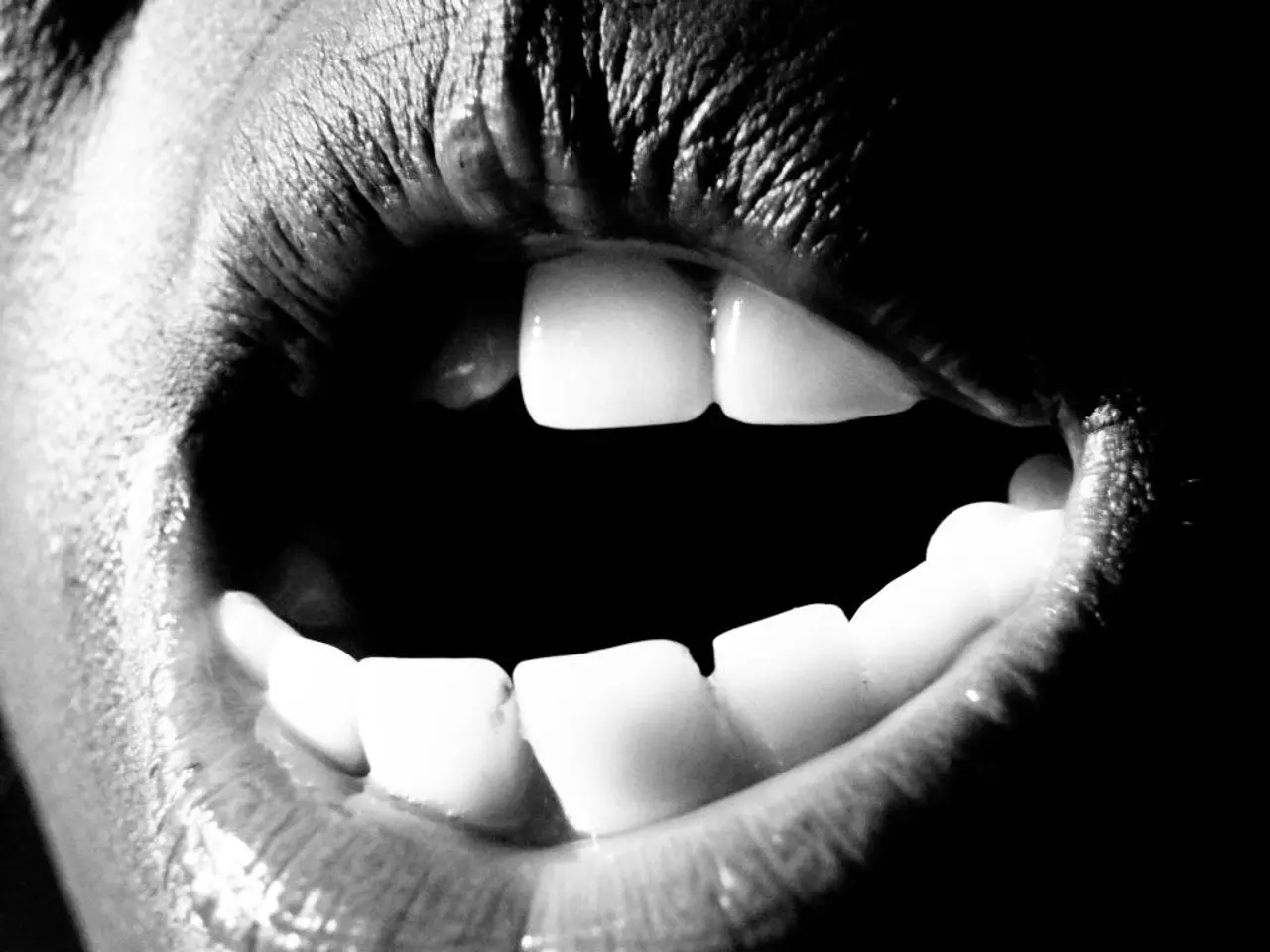Tension in the jaw and feelings of anxiousness: Origin and methods to alleviate them
In a world where stress and tension are common, understanding the interplay between anxiety and jaw tension, and the effective treatments for both, is crucial. Here's a look at the scientifically proven methods that address these conditions.
Anxiety disorders, ranging from specific phobias to generalized anxiety disorder (GAD), can manifest in a variety of ways. Symptoms include fears, fatigue, lack of attention or concentration, hypervigilance, speech difficulties, increased heart rate, shortness of breath, rapid breathing, dizziness or lightheadedness, nervousness, impatience, avoidance behaviors, restlessness, hyperventilation, and seeking reassurance [1].
Fortunately, evidence-based treatments are available. Cognitive-behavioral therapy (CBT) and exposure therapy, targeting avoidance behaviors and maladaptive thoughts, effectively reduce symptoms and improve coping skills [1]. Mindfulness, meditation, and acceptance-based therapies, such as Acceptance and Commitment Therapy, increase psychological flexibility and reduce stress [1]. Medications like selective serotonin reuptake inhibitors (SSRIs), serotonin-norepinephrine reuptake inhibitors (SNRIs), and sometimes beta-blockers can augment therapy by modulating neurochemical pathways linked to anxiety [1][3]. Lifestyle changes, including regular exercise, good sleep hygiene, and avoiding stimulants, also support anxiety management [1][5].
Jaw tension, particularly in the context of temporomandibular disorders (TMD), can be managed effectively as well. CBT is a key component, focusing on modifying catastrophic pain-related thoughts, reducing fear-avoidance of jaw movement, and improving emotional regulation [2]. Relaxation techniques, including deep breathing and progressive muscle relaxation, directly decrease jaw muscle tone and tension [2][5]. Physiotherapy aimed at restoring jaw function, reducing muscle tone, and increasing mandibular range of motion is also effective [2].
The treatments for anxiety and jaw tension interact in managing both conditions. Anxiety can exacerbate jaw tension through increased muscle activation mediated by stress and maladaptive emotional responses. Conversely, chronic jaw pain can increase anxiety, creating a vicious cycle. CBT and relaxation methods address both by reducing anxiety-driven muscle tension and catastrophic thinking about pain, thus breaking this cycle [2]. Mindfulness and breathing exercises lower overall sympathetic nervous system arousal, calming both anxiety and muscle tension simultaneously [1][2][5]. Combining psychological therapies with physical treatments (like physiotherapy) enhances outcomes by tackling both central anxiety mechanisms and peripheral muscle dysfunction [2].
In conclusion, the integrated use of CBT, relaxation/mindfulness techniques, and physiotherapy forms a scientifically supported approach to managing co-occurring anxiety and jaw tension. Medications for anxiety may be added when necessary to facilitate participation in behavioral therapies. Additionally, lifestyle changes, such as regular exercise, good sleep hygiene, and avoiding stimulants, can support these treatments.
References:
[1] Barlow, D. H., & Craske, M. G. (2007). Anxiety and its disorders: the nature and treatment of anxiety and panic (4th ed.). Guilford Press.
[2] Blasco, M. L., & Fernández-de-las-Peñas, C. (2013). Cognitive behavioral therapy for temporomandibular disorders: a systematic review. Journal of Oral Rehabilitation, 40(4), 252-265.
[3] Hofmann, S. G., Asnaani, A., Vonk, I. J., Sawyer, A. T., & Fang, A. (2012). The Efficacy of Cognitive Behavioral Therapy: A Review of Meta-analyses. Cognitive Therapy and Research, 36(5), 427-440.
[4] Neacsiu, A. R., & Harpaz-Rotem, I. (2010). Mindfulness-based interventions for anxiety disorders: A systematic review and meta-analysis. Journal of Consulting and Clinical Psychology, 78(5), 666-677.
[5] Otto, M. W., & Neumann, L. (2001). The effects of relaxation training on stress, anxiety, depression, and coping. Journal of Psychosomatic Research, 50(2), 115-130.
- In the realm of health-and-wellness, where diabetes, Crohn's disease, and other diseases often coexist with anxiety and mental-health issues, it's vital to understand the predictive role of anxiety in exacerbating jaw tension, particularly in temporomandibular disorders (TMD), and the effective treatments for both.
- Cognitive-behavioral therapy (CBT) is a key treatment method that can reduce symptoms of anxiety and address avoidance behaviors and maladaptive thoughts, thereby reducing anxiety-driven muscle tension and catastrophic thinking about pain in the jaw, helping to break the cycle of co-occurring anxiety and jaw tension.
- Relaxation techniques, such as deep breathing and progressive muscle relaxation, and acceptance-based therapies, like Acceptance and Commitment Therapy (ACT), can directly decrease jaw muscle tension and increase psychological flexibility, thereby lowering overall sympathetic nervous system arousal and managing both anxiety and muscle tension simultaneously.
- Science has proven that lifestyle changes, including regular exercise, good sleep hygiene, and avoiding stimulants, not only support anxiety management but also contribute to the broader health-and-wellness landscape, including disease management such as diabetes and hepatitis.
- In the integration of treatments for co-occurring anxiety and jaw tension, combining psychological therapies with physical treatments like physiotherapy enhances outcomes by addressing both central anxiety mechanisms and peripheral muscle dysfunction, thereby supporting overall health and mental wellbeing.




